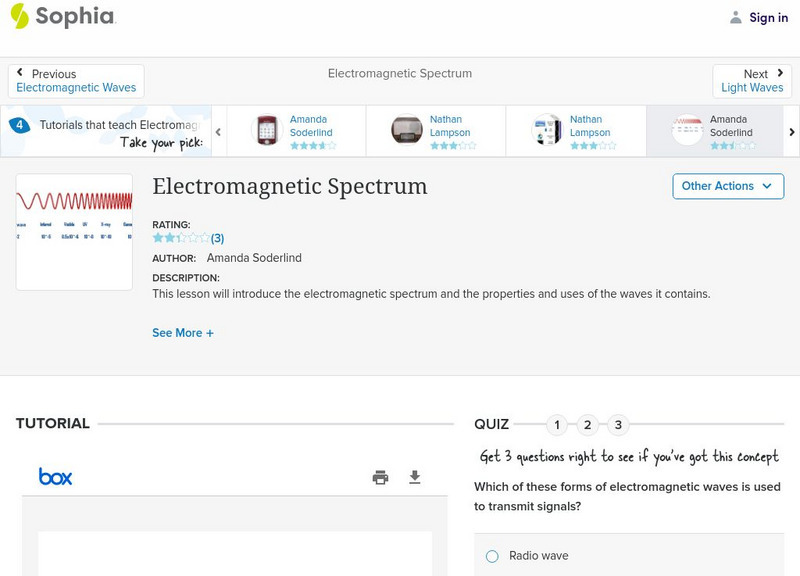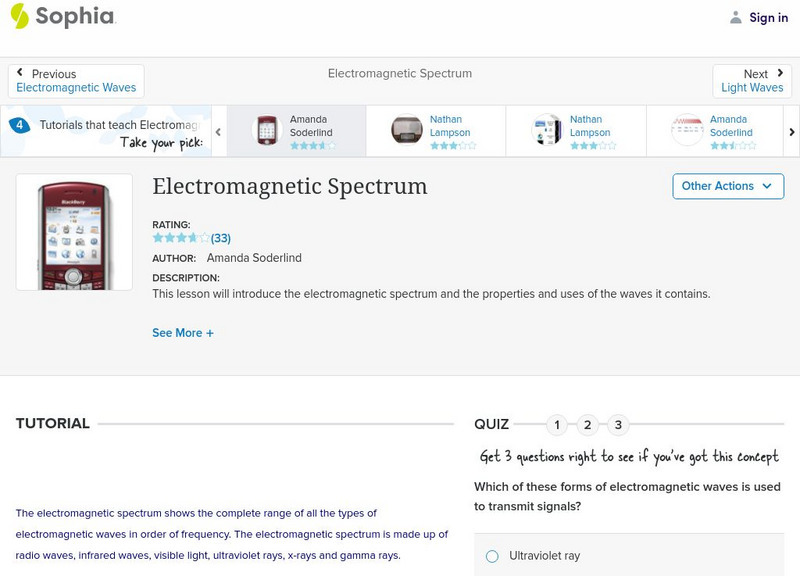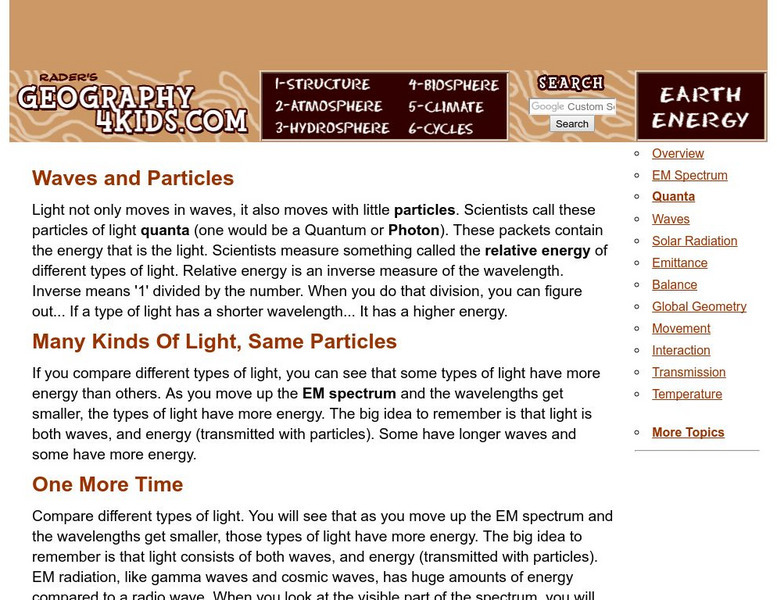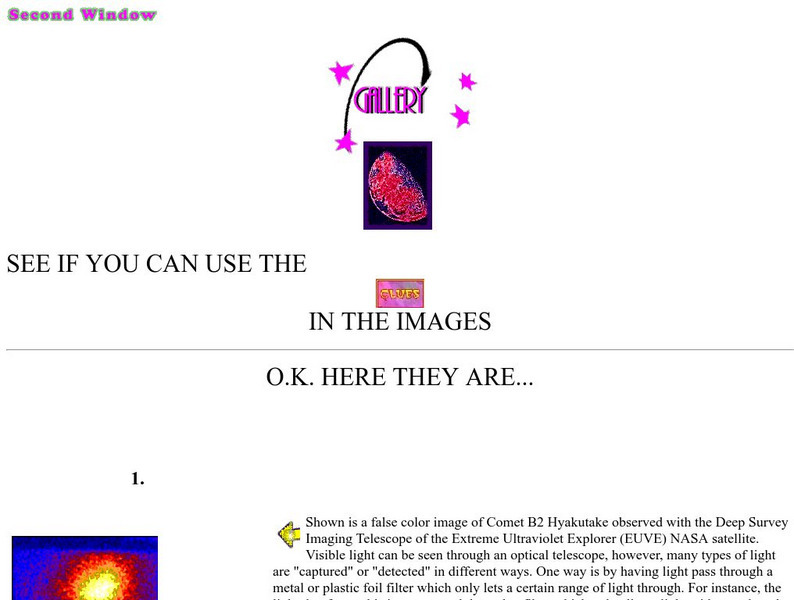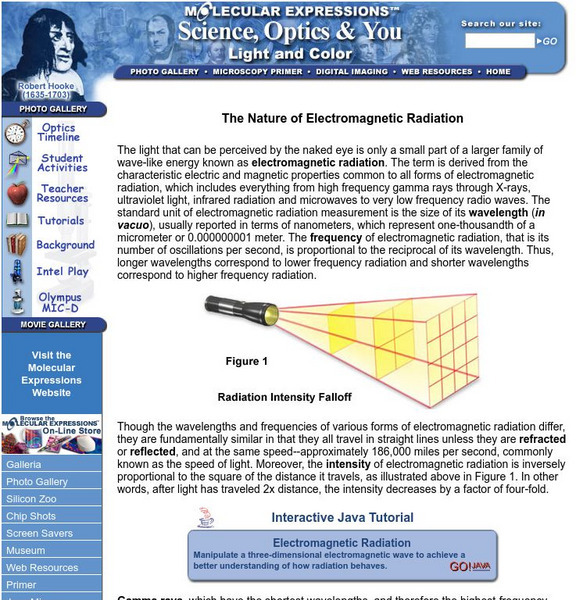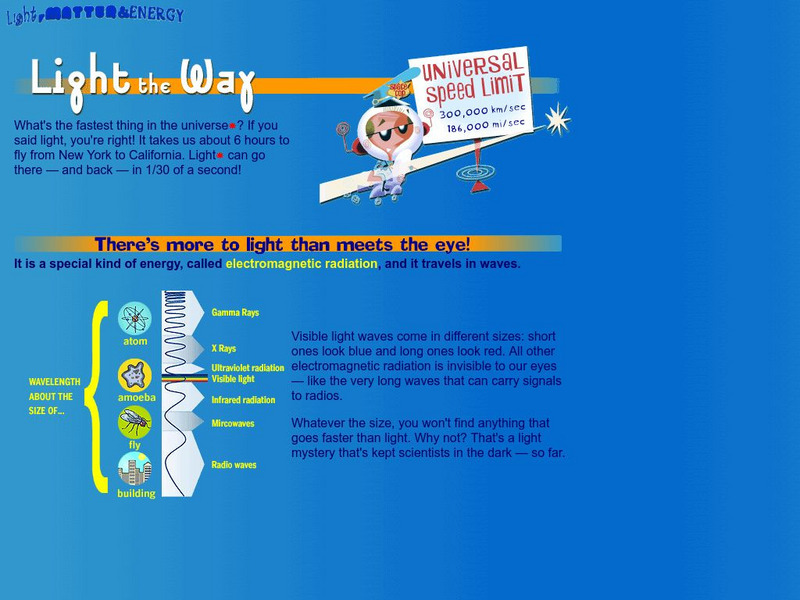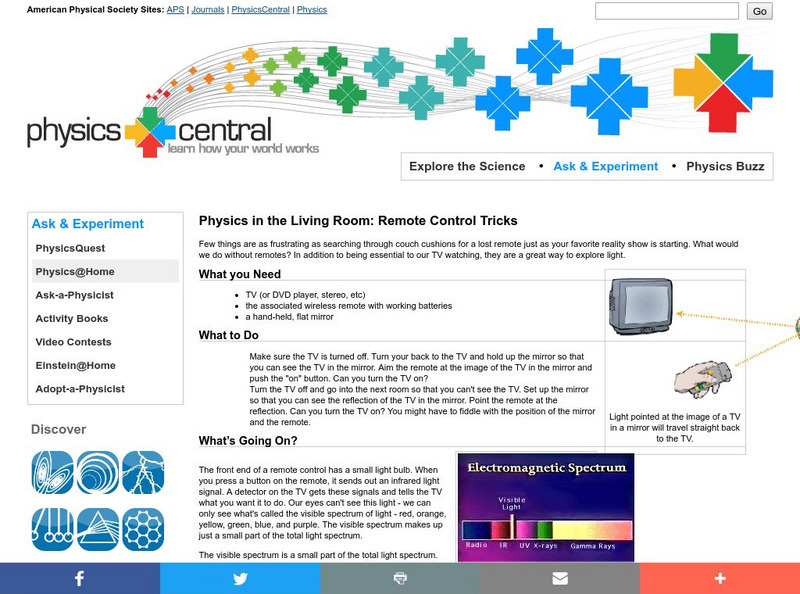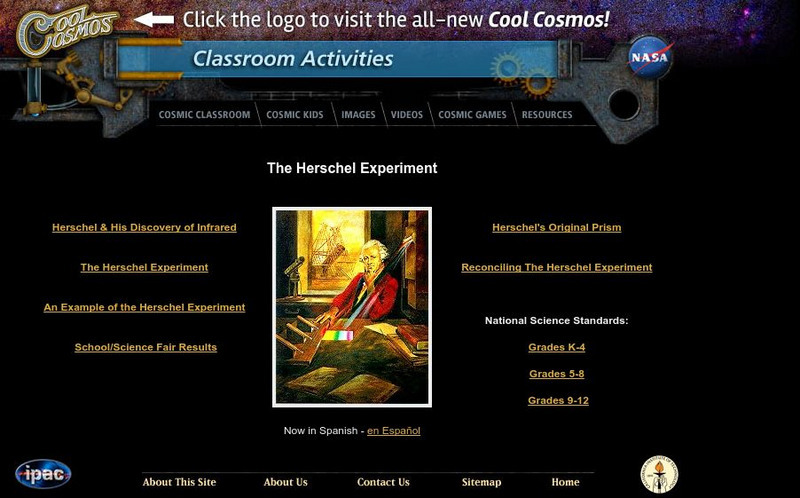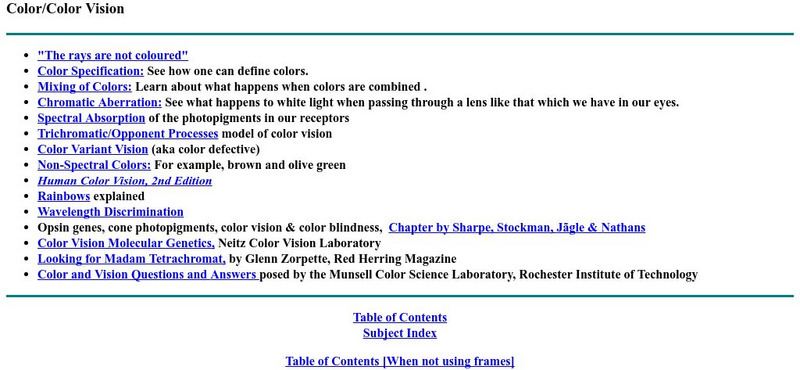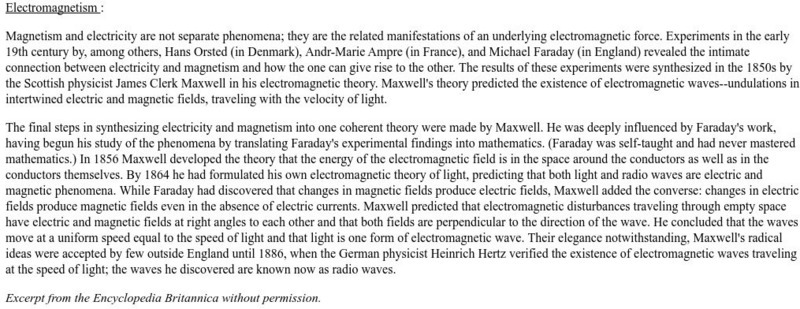Hi, what do you want to do?
Sophia Learning
Sophia: Electromagnetic Spectrum: Lesson 2
This lesson will introduce the electromagnetic spectrum and the properties and uses of the waves it contains. It is 2 of 4 in the series titled "Electromagnetic Spectrum."
Sophia Learning
Sophia: Electromagnetic Spectrum: Lesson 3
This lesson will introduce the electromagnetic spectrum and the properties and uses of the waves it contains. It is 3 of 4 in the series titled "Electromagnetic Spectrum."
Sophia Learning
Sophia: Electromagnetic Spectrum: Lesson 4
This lesson will introduce the electromagnetic spectrum and the properties and uses of the waves it contains. It is 4 of 4 in the series titled "Electromagnetic Spectrum."
Sophia Learning
Sophia: Electromagnetic Spectrum: Lesson 1
This lesson will introduce the electromagnetic spectrum and the properties and uses of the waves it contains. It is 1 of 4 in the series titled "Electromagnetic Spectrum."
Synopsys
Synopsys: Optics for Kids: What Is Light?
This site provides a short explanation of light, how it travels, and the speed in which it travels. Many other concepts related to optics can be found on this site as well.
Georgia State University
Georgia State University: Hyper Physics: Scattering Concepts
A collection of several pages explaining the principles which underlie Rayleigh scattering of light.
TeachEngineering
Teach Engineering: The Three Color Mystery
Students are introduced to an engineering challenge in which they are given a job assignment to separate three types of apples. However, they are unable to see the color differences between the apples, and as a result, they must think as...
Synopsys
Synopsys: Optics: A Gentle Intro to Optical Design: Wave Particle Duality
Discusses the manner in which light behaves as both wave and particle. This dualistic nature of light is one topic of many on the page.
ClassFlow
Class Flow: Visible Light and the Electromagnetic Spectrum
[Free Registration/Login Required] This flipchart introduces fifth grade students to the electromagnetic spectrum and focuses on the visible light spectrum, but all types of energy waves in the electromagnetic spectrum are touched on. It...
Geography 4 kids
Geography4 kids.com: Waves and Particles
Understand how light moves in small particles in the electomagntic spectrum.
Physics Classroom
The Physics Classroom: Polarization
"How Do We Know Light Behaves as a Wave?" An answer is provided in this discussion of the polarization of light and the use of Polaroid filters in sunglasses. The four methods discussed on this page are: polarization by transmission,...
TED Talks
Ted: Ted Ed: Light Waves, Visible and Invisible
Lucianne Walkowicz shows us the waves just beyond our perception: microwaves, radio waves, x-rays and more. [5:58]
University of California
Center for Science Education: Gallery
A gallery of astronomy images which depict galaxies, comets, the moon, planets, nebulae, supernovae as seen in various regions of the electromagnetic spectrum. Each image in the gallery is described. Fascinating!
Florida State University
Florida State University: Nature of Electromagnetic Radiation
This site from The Florida State University provides an informational page on electromagnetic radiation discusses the characteristics and properties of its many forms including X-rays, gamma rays, ultraviolet radiation, infrared...
American Museum of Natural History
American Museum of Natural History: O Logy: Light, Matter, Energy: Light the Way
What is electromagnetic radiation and how does it work? Review a captioned graphic that explains electromagnetic radiation and the visible and invisible types of radiation on the electromagnetic spectrum.
Science Struck
Science Struck: Wavelength of Light
Describes the characteristics of light, presents two formulas for calculating its wavelength, and provides a table of the different wavelength ranges across the electromagnetic spectrum.
Physics Central
Physics Central: Physics in the Living Room: Remote Control Tricks
An easy experiment through which students learn about light rays and the electromagnetic spectrum. Requires a TV, its remote, and a hand-held, flat mirror.
Wolfram Research
Wolfram Science World: Maxwell, James
This ScienceWorld site describes the Scottish mathematician and physicist James Maxwell (1831-1879) who published physical and mathematical theories of the electromagnetic field.
Georgia State University
Georgia State University: Hyper Physics: Color
This site from Georgia State University discusses the location of visible light on the electromagnetic spectrum. Includes the wavelength values for various colors of light within the visible light spectrum.
TED Talks
Ted: Ted Ed: What Is Color?
Colm Kelleher describes the physics behind colors- why the colors we see are related to the period of motion and the frequency of waves. [3:09]
TeachEngineering
Teach Engineering: The Visual Spectrum
In this activity, students make simple spectroscopes (prisms) to look at different light sources. The spectroscopes allow students to see differing spectral distributions of different light sources.
California Institute of Technology
Cool Cosmos: The Herschel Experiment
This website provides a background on the discoverer of infared light--Sir Frederick William Herschel. A version of the experiment Herschel conducted in the 1800s is provided as well.
York University
York University: Color and Color Vision
York University provides an index page to several other pages on the topic of color and color vision. The pages are part of an online "book." Many graphics and explanations.
University of Oregon
University of Oregon: Electromagnetism
A solid summary from the University of Oregon of the work of James Maxwell Clerk, Michael Faraday, and others in the field of electric and magnetic phenomena. This is a fine essay.






